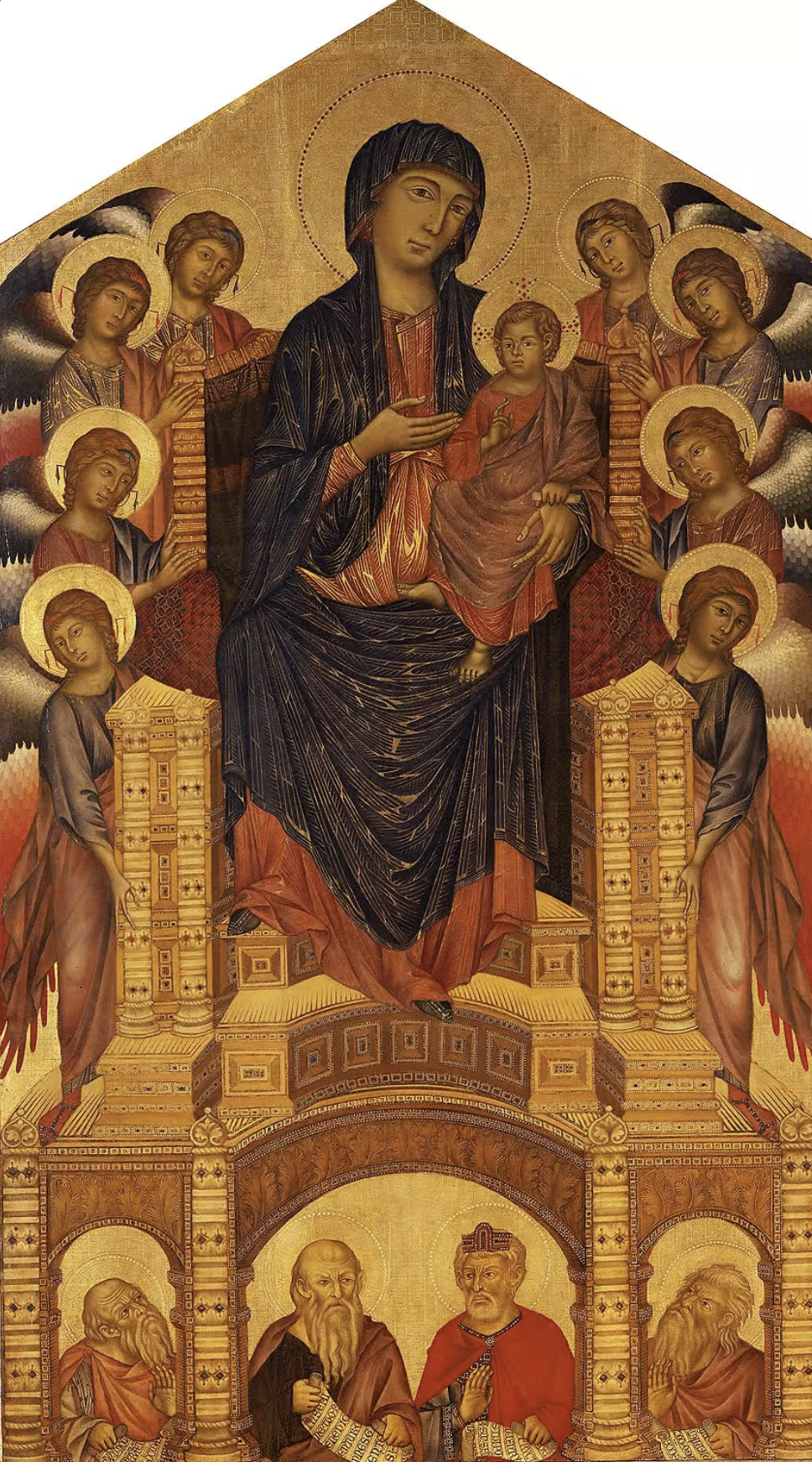How To Identify Art Movements
Being completely honest - I wrote this article to serve as a comprehensive revision guide for my upcoming postgraduate interviews. While my initial motivation was somewhat self-centered, there is an acknowledgment that the information compiled here might prove beneficial to others as well. With that in mind, let's transition to a more practical exploration of how to discern and identify different art movements across the expanse of western history.
Prehistoric Art (~40,000 - 4,000 B.C.)
The origins of the discipline of art history can be traced to the Prehistoric era, a time predating the advent of written records. The earliest remnants of artistic expression emerge from the Paleolithic era, commonly known as the Old Stone Age, taking the form of rock carvings, engravings, pictorial depictions, sculptures, and arranged stones.



Identifying: Characteristic features of prehistoric art encompass a dedication to naturalistic portrayals of animals, humans, and various elements of the surrounding environment. Additionally, abstract and geometric designs were prevalent in this ancient artistic expression. Materials commonly employed in prehistoric art included stone, bone, and pigments derived from natural sources. Among the most renowned examples are the Paleolithic cave paintings discovered in the intricate cave systems of Lascaux in France.
Regions: Global
Ancient Art (30,00 B.C. - 400 A.D.)
The realm of ancient paintings spans a diverse tapestry of cultures, offering glimpses into the values and beliefs of prehistoric societies. Ancient art encompasses that of ancient greek art, Egypt and more. These artworks predominantly explore themes related to mythology, religious rituals, and daily life.




Identifying: Recognition of ancient paintings involves an exploration of various mediums such as cave walls, pottery, and murals. Look for depictions of mythological narratives, religious ceremonies, and scenes of daily life, each reflecting the distinct characteristics of the civilization it represents.
Regions: Global
Byzantine (330 - 1453 A.D.)
Byzantine art comprises the body of artistic products of the Eastern Roman Empire. Iconic mosaics, religious icons, and illuminated manuscripts serve as enduring examples of Byzantine artistic expressions. Byzantine Art is often divided into four periods: Early Byzantine (330 - 842 A.D.), Middle Byzantine period (843 - 1204 A.D.), Late Byzantine period (ending 1453 A.D.) and Post Byzantine, which is a term used when the dissolution of the Ottoman Empire prompted a renewed appreciation of Byzantium.





Identifying: To discern Byzantine paintings, focus on the prevalence of religious and imperial subjects, often adorned with intricate detailing. Byzantine art sees not to mimic reality but instead favors a more symbolic approach. The use of gold backgrounds symbolizing the divine and the incorporation of religious symbolism, such as halos and angelic figures, are distinctive features.
Regions: Mediterranean, present-day Turkey, Southern Spain and Italy.
Romanesque (1000 - 1150)
Romanesque art, predominantly architectural, extended its influence to paintings in the form of murals and illuminated manuscripts. This art style can be seen in some of the oldest churches and cathedrals. These paintings often conveyed religious narratives and moral teachings.



Identifying: Recognizing Romanesque paintings involves noting murals and illuminated manuscripts within churches. Observe static and elongated figures, often portraying biblical scenes, and intricate details reflecting didactic purposes. Colours were very striking, and mostly primary. Compositions usually had little depth and needed to be flexible to be displayed along varying surfaces such as curved interiors.
Regions: France, Italy, Britain, and the German lands.
Gothic (1140 - 1600)
Gothic art, emerging in Northern France in the 12th century AD, evolved from Romanesque art alongside the development of Gothic architecture. It spread across Western Europe, including Northern, Southern, and Central Europe, coexisting with classical styles in Italy. The refinement of International Gothic in the late 14th century continued until the late 15th century. In some regions, like Germany, Late Gothic art endured into the 16th century before merging into the Renaissance.

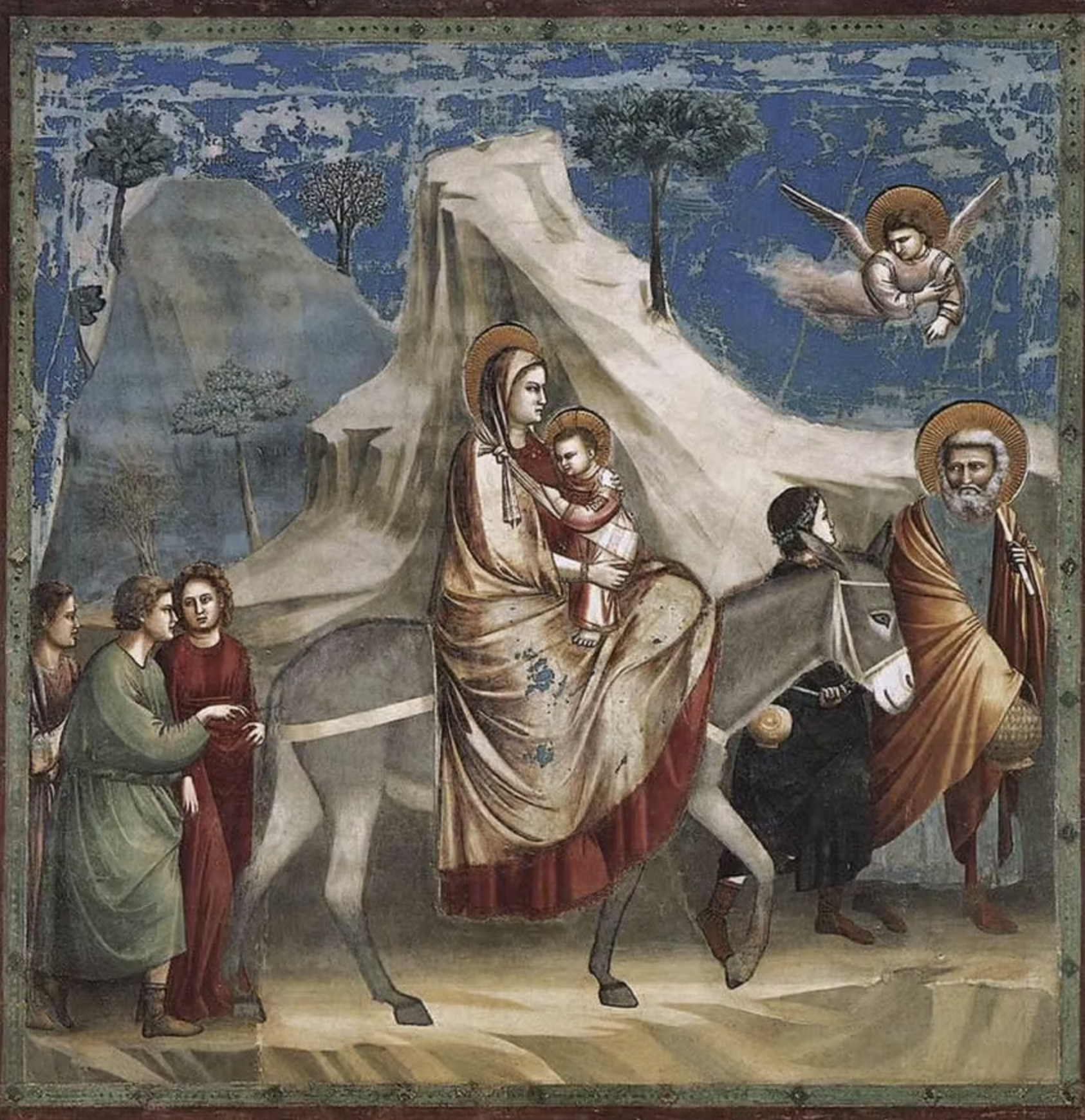
Identifying: Identifying Gothic art involves recognizing the subtle transition from Romanesque, marked by imprecise shifts and the introduction of ornamental detailing before significant changes in figure styles. In Gothic paintings, detailed depictions of religious narratives unfold within the context of pointed arches, ribbed vaults, and flying buttresses. As the evolution progresses, figures adopt more animated poses and facial expressions, appearing smaller against the background and arranged with increased freedom in the pictorial space. The play of light through stained glass windows enhances the ethereal atmosphere, encapsulating the distinctive features of Gothic artistic expression.
Regions: All of Western Europe and much of Northern, Southern and Central Europe.
Renaissance (1495 - 1527)
Renaissance art, spanning from 1350 to 1620 AD, encompasses painting, sculpture, and decorative arts during the European Renaissance. Originating in Italy around 1400 AD, it coincided with advancements in philosophy, literature, music, science, and technology. This art movement drew inspiration from Classical antiquity, considering it the noblest tradition. However, Renaissance art transformed this foundation by incorporating innovations from Northern European art and applying contemporary scientific knowledge.
This period consists of the Early Renaissance and the High Renaissance. Following the initial departures of the Early Renaissance from religious themes, the High Renaissance transitioned into a refined and sophisticated iteration of its early counterpart. Between 1495 and 1520, artists in this period emphasized idealized figures and compositions marked by a dedication to symmetry and realism.



Identifying: Identifying Renaissance art entails recognizing the dynamic portrayal of human figures engaged in expressive gestures and interactions, deviating from the flattened representations of medieval art. These figures convey a three-dimensional presence, often situated within realistic landscapes rather than against traditional gold backgrounds. Geometric divisions and techniques like linear perspective contribute to depth, while foreshortening and tromp l'oeil add innovative visual elements. The predominant subject matter is religious, featuring symbolic gestures and vibrant details. Renaissance art introduces continuous narrative, depicting multiple events within a single frame. Non-religious portraits of patrons emerged, reflecting societal changes. Diverse formats, including canvases, altarpiece polyptychs, and circular tondi paintings, showcase artistic innovation.
Regions: Italy
Mannerism (1520 - 1600)
Mannerism, succeeding the High Renaissance, encapsulates the period from 1520 to 1600 within the broader Renaissance movement. Originating as a reaction against the harmonious ideals of the High Renaissance, Mannerist art emerged as a more stylized and unconventional expression. Artists of this era, spanning the late 16th century, departed from the classical proportions and balance embraced in the High Renaissance This period, marked by an emphasis on individualism and experimentation, stands as a distinct phase within the evolving narrative of Renaissance art.

Identifying: Mannerist art involves noting paintings with elongated figures, distorted proportions, and unconventional compositions. Departing from the naturalism of the High Renaissance, Mannerist artists embraced a deliberate sense of artificiality. The emotional intensity portrayed in their works, along with the exploration of unconventional forms, sets Mannerism apart from earlier Renaissance movements.
Regions: Italy (spread as far as northern and Central Europe)
Baroque (1600 - 1725)
The Baroque period, spanning from 1600 to 1725, represents a dynamic phase in the evolution of Renaissance art. Emerging as a response to the stylized tendencies of Mannerism, Baroque art is characterized by its dramatic, emotional intensity and grandeur. This period witnessed a departure from the harmony and balance of the High Renaissance, opting instead for dynamic compositions, vivid contrasts of light and shadow (chiaroscuro), and an overall sense of theatricality. Baroque artists, such as Caravaggio and Bernini, sought to engage viewers on a visceral level, utilizing intense emotions, elaborate ornamentation, and a heightened emphasis on realism. The subject matter of Baroque art extended beyond religious themes to encompass aspects of everyday life, resulting in a diverse range of works that captured the essence of the human experience.





Identifying: Recognizing Baroque art involves observing dynamic compositions marked by dramatic chiaroscuro, emphasizing intense emotional expressions and theatricality. The play of light and shadow creates a sense of depth and engages the viewer emotionally. Baroque artists, unlike their predecessors, often portrayed scenes from everyday life with the same grandeur as religious subjects. Look for elaborate ornamentation, a focus on realism, and a dynamic interplay of light and dark within the artwork.
Regions: Italy, France, Spain, Portugal, Austria, southern Germany, and Poland.
Rococo (1720 - 1760)
The Rococo period, emerged as a departure from the dramatic and grandiose tendencies of the Baroque era. Characterized by its ornate and delicate aesthetic, Rococo art reflects a shift towards a lighter, more playful style. This period, often associated with the courtly culture of 18th-century France, sought to evoke a sense of elegance, charm, and refined indulgence. Rococo artists, including François Boucher and Jean-Honoré Fragonard, embraced asymmetry, curvilinear forms, and intricate detailing, creating works that exuded a sense of grace and sophistication. The subject matter of Rococo art often included themes of love, nature, and leisure, depicting idyllic scenes that transported viewers to a world of leisurely pleasure.




Identifying: Recognizing Rococo art involves noting its ornate and delicate aesthetic, characterized by asymmetry and curvilinear forms. The emphasis on intricate detailing and refined indulgence distinguishes Rococo from the grandiosity of the Baroque. Look for themes of love, nature, and leisure, as well as the portrayal of idyllic scenes that convey a sense of grace and sophistication. Rococo art often reflects the cultural ambiance of 18th-century France, offering a departure from the dramatic narratives of previous periods.
Regions: France, Germany and Austria
Neoclassicism (1770 - 1840)
Neoclassical art, originating in the mid-18th century, emerged as a reaction against the ornate and whimsical Rococo style that dominated the preceding Baroque period. Rooted in a revival of classical Greek and Roman aesthetics, Neoclassicism sought inspiration from the ideals of reason, order, and virtue espoused by ancient civilizations. In the context of the Enlightenment era, Neoclassical art became intertwined with intellectual pursuits, reflecting a desire for rationality and a return to the perceived purity of classical ideals amid the societal and political transformations of the time.


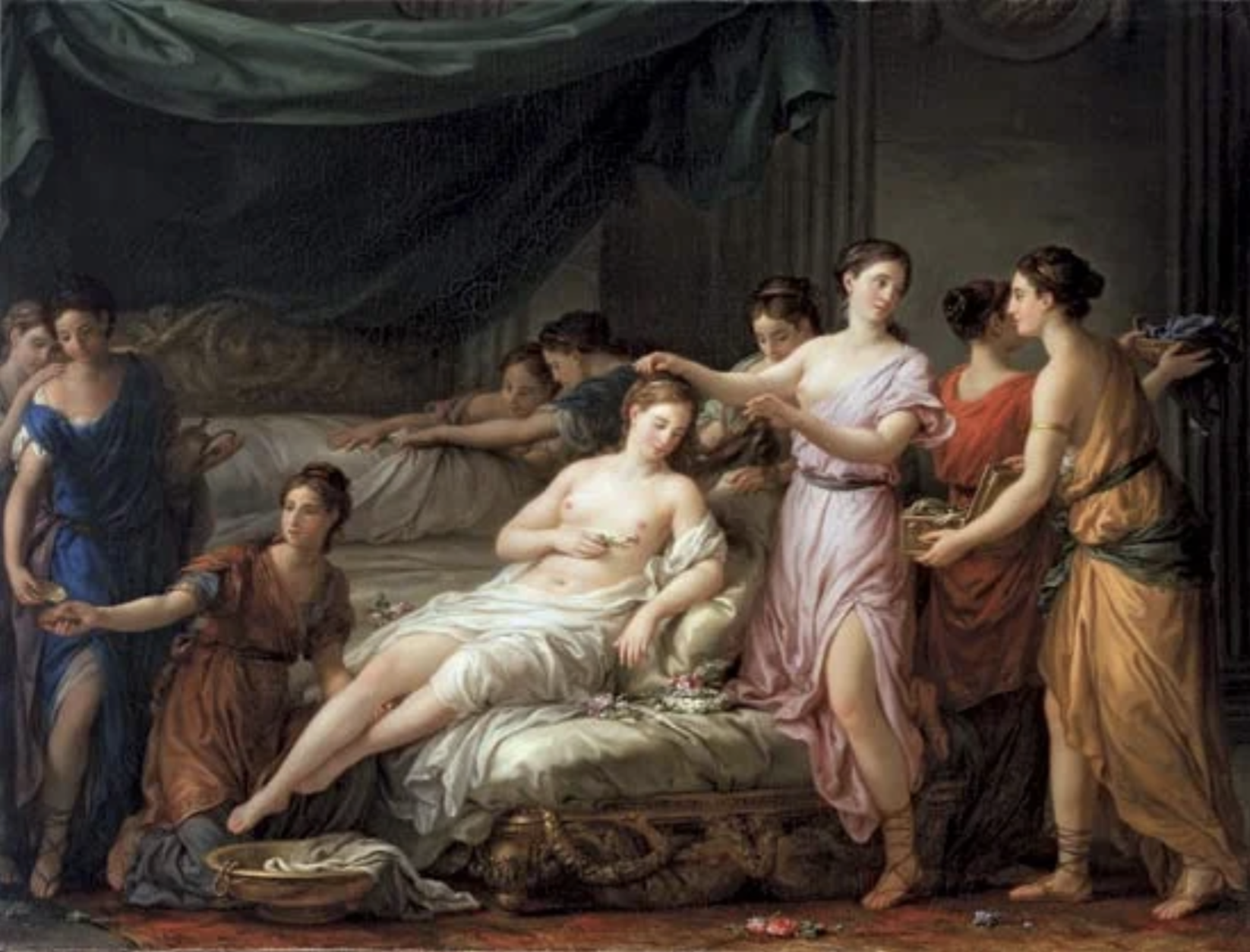
Identifying: Recognizing Neoclassical art involves noting its emphasis on classical ideals, characterized by clean lines, geometric precision, and a restrained use of ornamentation. Artists like Jacques-Louis David aimed to convey moral virtue and civic duty through their works. Look for subjects inspired by classical mythology, historical narratives, and depictions of heroism, as Neoclassicism sought to revive the timeless virtues of ancient Greece and Rome in the context of the Enlightenment era.
Regions: Italy
Romanticism (1800 - 1850)
Romanticism, a significant artistic and intellectual movement that emerged in the late 18th century, represented a profound shift away from the rationality of the Enlightenment era. Originating in Europe, particularly in Germany and Britain, Romanticism sought to evoke powerful emotions, emphasize individual expression, and embrace the sublime aspects of nature and the human experience. The movement celebrated the individual's connection with nature, the mysterious, and the irrational, rejecting the constraints of strict classical forms in favor of more emotive and spontaneous expressions. Romanticism unfolded across various artistic disciplines, leaving an enduring impact on literature, visual arts, and music.



Identifying: Recognizing Romanticism involves noting its emphasis on emotion, individualism, and a connection with nature. Artists like Eugène Delacroix and Caspar David Friedrich expressed these ideals through dramatic scenes, vibrant colors, and a departure from classical forms. Look for themes of passion, exoticism, the sublime, and a fascination with the mysterious and supernatural in Romantic artworks, as they capture the spirit of a movement that sought to evoke powerful emotional responses and challenge the rationalism of the preceding Neoclassical era.
Regions: Europe
Realism (1808 - 1870)
Realism, as an artistic movement that gained prominence in the mid-19th century, emerged in response to the idealized and romanticized depictions prevalent in academic art. Originating in France, Realism sought to portray contemporary life with accuracy and sincerity, rejecting the fantastical and historical subjects of the Romantic period. Realism aimed to capture the authentic aspects of society, reflecting the influence of social and political changes during the Industrial Revolution.


Identifying: Recognizing Realism involves noting its dedication to portraying everyday life with truth and accuracy. Artists like Gustave Courbet and Honoré Daumier rejected idealized depictions, focusing instead on the harsh realities of the contemporary world. Look for meticulous attention to detail, depictions of ordinary people, urban scenes, and explorations of social issues in Realist artworks. The movement challenged prevailing artistic conventions by embracing a straightforward and unidealized approach, making it distinct within the broader scope of art history.
Regions: France
Pre-Raphaelite Art (1848 - 1854)
The Pre-Raphaelite Brotherhood, founded in 1848 by English artists Dante Gabriel Rossetti, John Everett Millais, and William Holman Hunt, represented a movement that rejected the academic norms of their time. The Pre-Raphaelites sought inspiration from medieval and early Renaissance art, advocating for a return to the detailed, vibrant, and symbolic qualities found in art created before the High Renaissance. Their works often featured intricate details, vivid colors, and a focus on nature, mythology, and literary themes. The Pre-Raphaelite movement aimed to revive sincerity and spiritualism in art, challenging the conventions of Victorian academic painting.



Identifying: Recognizing Pre-Raphaelite Art involves noting its rebellious spirit against academic conventions of the mid-19th century. Look for works by artists like Dante Gabriel Rossetti, John Everett Millais, and William Holman Hunt, featuring intense color palettes, intricate symbolism, and a focus on nature and medieval themes. Pre-Raphaelite artworks often display meticulous attention to detail and a rejection of the idealized representations prevalent in contemporary art. By reviving techniques from before the influence of Raphael, the movement sought to bring sincerity and authenticity back into artistic expression.
Regions: England
Impressionism (1870 - 1900)
Impressionism, a pivotal art movement that emerged in the late 19th century in France, sought to capture the fleeting effects of light and color in the immediacy of the moment. Influenced by industrialization and advancements in paint technology, artists like Claude Monet, Edgar Degas, and Pierre-Auguste Renoir abandoned traditional studio practices, opting to paint outdoors, or en plein air, to observe and portray the play of light on different surfaces. Characterized by visible brushstrokes, emphasis on atmosphere, and a departure from detailed realism, Impressionism aimed to convey sensory experiences and the transient nature of perception.



Identifying: Recognizing Impressionism involves noting its revolutionary departure from traditional conventions. Look for loose brushstrokes, a focus on everyday scenes, and an emphasis on capturing the effects of light and atmosphere. Artists like Monet, Renoir, and Degas often opted for spontaneity, rejecting meticulous detail in favor of conveying immediate impressions. The use of color over line and the practice of plein air painting, capturing scenes outdoors, are distinctive features of the Impressionist movement that aimed to convey the transient and dynamic nature of perception.
Regions: France
Naturalism (1860 - 1900)
Naturalism, an extension of Realism, emerged in the mid-19th century and emphasized a scientific approach to art, seeking to represent reality in an objective and unidealized manner. Artists such as Émile Zola and Gustave Courbet depicted everyday life with a focus on naturalistic accuracy, often exploring the harsh realities of society. Naturalist works, like those of Honoré Daumier and Jean-François Millet, delved into social issues, portraying scenes of poverty, industrialization, and the human condition. The movement reflected a desire to document and analyze the complexities of contemporary life with meticulous attention to detail.



Identifying: Recognizing Naturalism involves noting its extension of Realism with a meticulous and scientific approach to representation. Look for works by artists like Émile Zola and Gustave Courbet that strive for almost photographic accuracy in depicting nature and society. Naturalist artworks often explore darker themes of human existence, delving into issues such as poverty, class struggles, and the societal impacts of industrialization. The movement prioritized observational accuracy and drew inspiration from contemporary scientific discoveries, reflecting a commitment to portraying the objective realities of the world.
Regions: France
Post-Impressionism (1886 - 1905)
Post-Impressionism, a diverse art movement that emerged in the late 19th and early 20th centuries, marked a departure from the optical realism of Impressionism. Artists such as Paul Cézanne, Vincent van Gogh, and Paul Gauguin sought to extend and challenge the principles of their predecessors. While each artist within the movement developed a distinctive style, Post-Impressionists shared an interest in subjective interpretation, the use of color for emotional impact, and a departure from direct observation. Cézanne's exploration of geometric forms, Van Gogh's vibrant and emotive colors, and Gauguin's exploration of non-Western cultures exemplify the diverse approaches within Post-Impressionism.




Identifying: Identifying Post-Impressionism involves recognizing its departure from the constraints of Impressionist techniques. Artists like Vincent van Gogh, Paul Cézanne, and Georges Seurat explored individualistic styles, emphasizing personal expression and symbolic content. The movement retained the Impressionists' interest in color and light but expanded its scope, incorporating more structure and meaning into compositions. Post-Impressionist artworks often feature bold colors, distorted forms, and experimentation with perspective, reflecting a diverse range of artistic approaches that paved the way for later modernist movements.
Regions: France
Expressionism (1890 - 1939)
Expressionism, an avant-garde movement that emerged in the early 20th century, focused on conveying heightened emotions and subjective experiences through distorted and vivid depictions. Artists like Edvard Munch, Ernst Ludwig Kirchner, and Egon Schiele expressed a rejection of naturalism and a desire to evoke intense emotional responses. Characterized by bold colors, distorted forms, and a departure from traditional representation, Expressionism often delved into the psychological and existential aspects of the human condition. The movement played a crucial role in shaping the trajectory of modern art, influencing subsequent developments in the art world.



Identifying: Identifying Expressionism involves recognizing its departure from traditional artistic norms. Emerging in the early 20th century, Expressionist artists such as Edvard Munch and Ernst Ludwig Kirchner sought to convey heightened emotions and subjective experiences through distorted and vivid depictions. Characterized by bold colors, distorted forms, and a rejection of realistic representation, Expressionism aimed to evoke intense emotional responses and convey the inner essence of the subject matter. The movement, often associated with the exploration of psychological states and societal anxieties, played a crucial role in shaping the trajectory of modern art.
Regions: Northern Europe
Fauvism (1900 - 1935)
Fauvism, a short-lived but influential movement that emerged in the early 20th century, marked a radical departure from traditional color conventions and representational norms. Led by artists like Henri Matisse and André Derain, Fauvism embraced vibrant and non-naturalistic colors to evoke emotion and express the artist's subjective experience. Characterized by intense hues, simplified forms, and a disregard for realistic color schemes, Fauvist artworks often conveyed a sense of energy and spontaneity. The movement, known for its emphasis on the emotional impact of color, played a pivotal role in the development of modern art.




Identifying: Identifying Fauvism involves recognizing its bold departure from traditional color conventions and representational norms. Originating in the early 20th century, Fauvist artists like Henri Matisse and André Derain embraced vibrant and non-naturalistic colors to evoke emotion and express the artist's subjective experience. Characterized by intense hues, simplified forms, and a disregard for realistic color schemes, Fauvist artworks often convey a sense of energy and spontaneity. The movement, marked by its emphasis on the emotional impact of color, played a pivotal role in the development of modern art.
Regions: France
Expressionism (1905 - 1920)
Expressionism, emerging in the early 20th century, originated as a response to the changing social and cultural landscape of the time. Rooted in Germany and later spreading across Europe, Expressionism sought to convey subjective experiences and emotions through distorted and exaggerated depictions. Artists such as Ernst Ludwig Kirchner and Emil Nolde, associated with groups like Die Brücke and Der Blaue Reiter, explored the inner world of the psyche, often depicting scenes of anxiety, alienation, and emotional intensity. Expressionism in painting and literature reflected the broader cultural upheavals, including the impact of World War I and a sense of disillusionment with traditional values.


Identifying: Expressionism involves recognizing its departure from traditional artistic norms. Emerging in the early 20th century, Expressionist artists sought to convey heightened emotions and subjective experiences through distorted and vivid depictions. Characterized by bold colors, distorted forms, and a rejection of realistic representation, Expressionism aimed to evoke intense emotional responses and convey the inner essence of the subject matter. The movement, often associated with the exploration of psychological states and societal anxieties, played a crucial role in shaping the trajectory of modern art.
Regions: Northern Europe
Art Nouveau (1895 - 1915)
Art Nouveau, emerging in the late 19th century, was a decorative and ornamental movement that sought to unify art with everyday life. Originating in Europe, particularly in France and Belgium, Art Nouveau embraced sinuous lines, intricate patterns, and organic forms inspired by nature. Artists like Alphonse Mucha and architects such as Victor Horta aimed to break away from historical styles and create a modern aesthetic. The movement extended to various art forms, including graphic design, architecture, and applied arts, leaving a lasting impact on the design world.

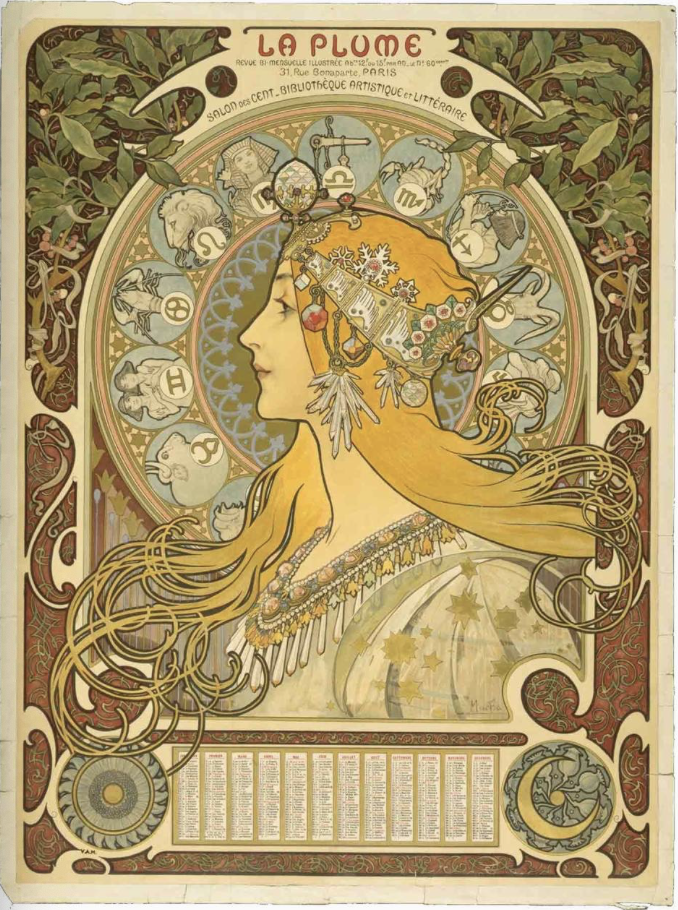
Identifying: Art Nouveau involves recognizing its distinctive ornamental and organic aesthetic that flourished in the late 19th and early 20th centuries. Characterized by sinuous lines, intricate patterns, and an emphasis on flowing, asymmetrical designs inspired by natural forms, Art Nouveau aimed to create a harmonious fusion between art and everyday life. Artists like Alphonse Mucha and René Lalique employed innovative techniques in graphic design, architecture, and decorative arts. The movement, often associated with a celebration of craftsmanship and a rejection of historical styles, left a lasting impact on various design disciplines during its brief but influential existence.
Regions: Western Europe and the United States
Cubism (1905 - 1939)
Cubism, originating in the early 20th century, marked a revolutionary departure from traditional representation by depicting subjects from multiple viewpoints simultaneously. Pioneered by Pablo Picasso and Georges Braque, Cubism sought to break down objects into geometric shapes, challenging the conventions of perspective and depth. The movement, often divided into Analytic and Synthetic phases, had its roots in the artists' fascination with African and Iberian art, as well as the influence of Paul Cézanne's exploration of form. Cubism played a foundational role in the development of modern art, influencing subsequent movements like Futurism and Constructivism.



Identifying: Cubism involves recognizing its radical departure from traditional representation. Originating in the early 20th century with artists like Pablo Picasso and Georges Braque, Cubism sought to depict objects from multiple viewpoints simultaneously. Characterized by fragmented forms, geometric shapes, and a disintegration of traditional perspective, Cubist artworks present a complex and multidimensional vision. The movement, pivotal in the development of abstract art, challenged conventional notions of space and form, introducing a revolutionary approach that influenced a wide range of artistic disciplines.
Regions: France
Futurism (1909 - 1918)
Futurism, emerging in Italy in the early 20th century, was a dynamic and avant-garde movement that celebrated the energy, speed, and technological advancements of the modern age. Founded by Filippo Tommaso Marinetti, Futurist artists rejected traditional art forms and embraced themes related to urban life, machines, and the concept of speed. Influenced by the rise of industrialization and the futurist manifesto, artists like Umberto Boccioni and Giacomo Balla sought to capture the essence of the contemporary world through fragmented forms, motion, and vibrant colors. Futurism's emphasis on dynamism and its manifesto's celebration of war and aggression marked a distinctive and controversial chapter in modern art.



Identifying: Futurism involves recognizing its dynamic and forward-looking approach that emerged in the early 20th century. Originating with artists like Filippo Tommaso Marinetti, Futurism celebrated modernity, technology, and the energy of urban life. Characterized by dynamic compositions, fractured forms, and a fascination with speed and movement, Futurist artworks aimed to capture the essence of a rapidly changing world. The movement, marked by its rejection of tradition and embrace of the future, played a significant role in influencing the aesthetics of various art forms and reflecting the spirit of the early 20th-century avant-garde.
Regions: Italy
Dadaism (1912 - 1923)
Dadaism, originating during and after World War I, was a provocative and anti-establishment art movement that emerged in Zurich, Switzerland. Founded by figures like Tristan Tzara and Hugo Ball, Dada artists rejected conventional norms and embraced absurdity, chance, and anarchy. Characterized by a playful disregard for traditional artistic techniques, Dada artworks often incorporated found objects, performances, and unconventional materials. The movement, a response to the disillusionment caused by the war, sought to subvert societal norms and challenge the perceived meaninglessness of the time. Dadaism's influence extended to various artistic disciplines, paving the way for the development of Surrealism and conceptual art.


Identifying: Dadaism involves recognizing its avant-garde and anti-establishment stance that emerged in the early 20th century. Originating with artists like Marcel Duchamp and Tristan Tzara, Dadaism rejected conventional artistic norms and embraced absurdity, chance, and anti-art sentiments. Characterized by unconventional materials, found objects, and performances that challenged traditional notions of artistic value, Dada artworks often aimed to subvert established ideas. The movement, marked by its irreverence and rejection of rationality, played a key role in influencing subsequent art movements and challenging the status quo in both art and society.
Regions: Europe and the United States (originated in Switzerland)
Constructivism (1913 - 1930)
Constructivism, originating in Russia in the early 20th century, was a dynamic and multidisciplinary movement that sought to bridge art with industrial production and social progress. Influenced by the Russian Revolution and the ideas of Vladimir Tatlin, Constructivist artists such as Aleksander Rodchenko and El Lissitzky embraced geometric forms, industrial materials, and a commitment to utilitarianism. Rejecting traditional art for art's sake, Constructivism aimed to integrate art into everyday life and contribute to the construction of a new, socialist society. The movement played a significant role in shaping graphic design, architecture, and the visual language of the early Soviet Union.


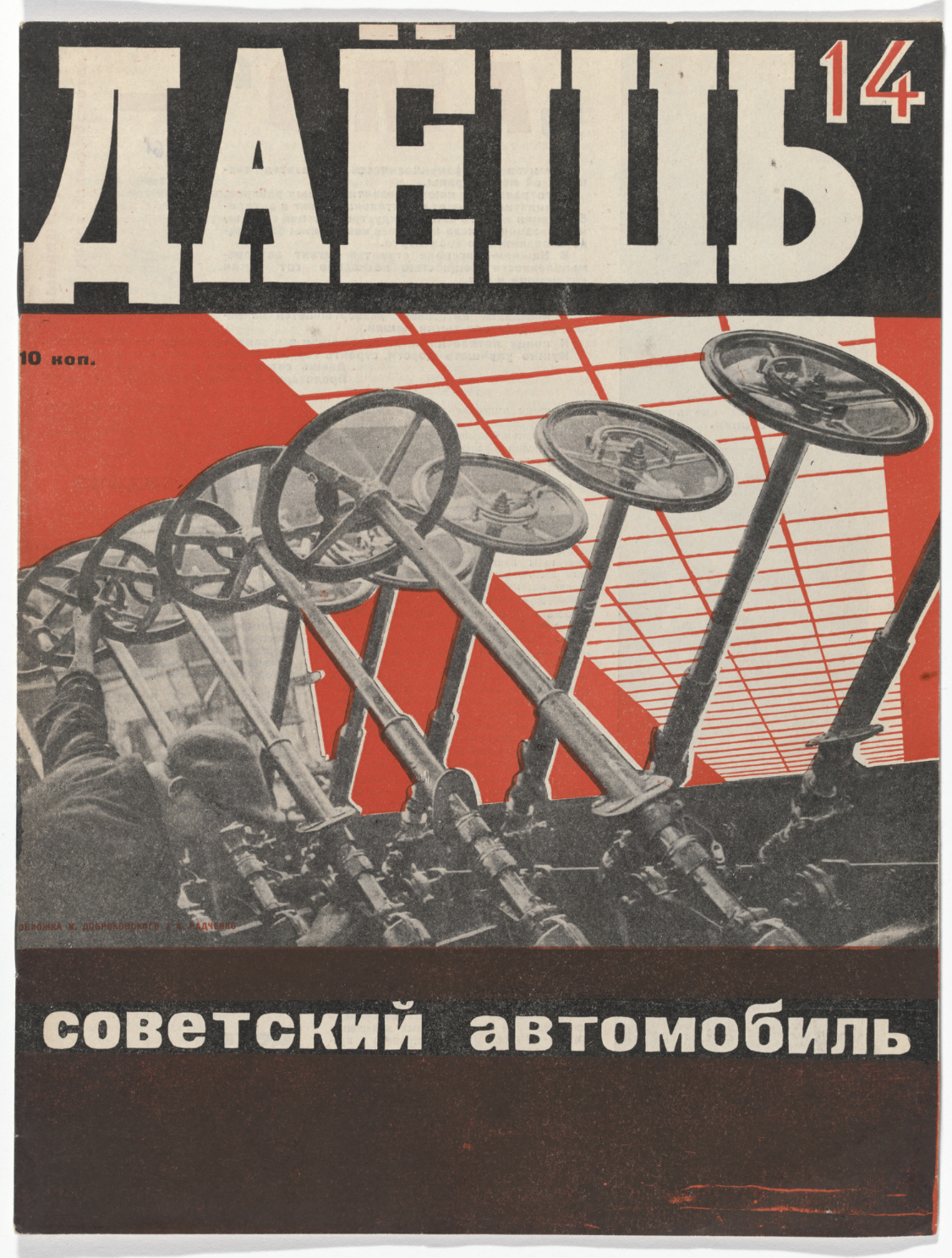
Identifying: Constructivism involves recognizing its geometric and industrially influenced aesthetic that emerged in the early 20th century. Originating with artists like Vladimir Tatlin and Aleksander Rodchenko, Constructivism emphasized the integration of art with technology and industry. Characterized by geometric forms, a focus on functionality, and an avoidance of ornamentation, Constructivist artworks often sought to contribute to societal progress. The movement, deeply connected to the Russian avant-garde, played a crucial role in shaping modern art and design, influencing architecture, graphic design, and the broader realm of visual communication.
Regions: Russia
New Objectivity (1918 - 1933)
New Objectivity, or Neue Sachlichkeit, emerged in Germany during the aftermath of World War I as a response to the societal and political upheavals of the time. This movement, active in the 1920s, rejected the emotional subjectivity of Expressionism and instead embraced a more realistic and detached approach. Artists associated with New Objectivity, such as Otto Dix and George Grosz, depicted the harsh realities of post-war Germany, offering a critical and satirical perspective on the social and political climate. The movement reflected a desire for objectivity and a rejection of the idealized representations of the past.

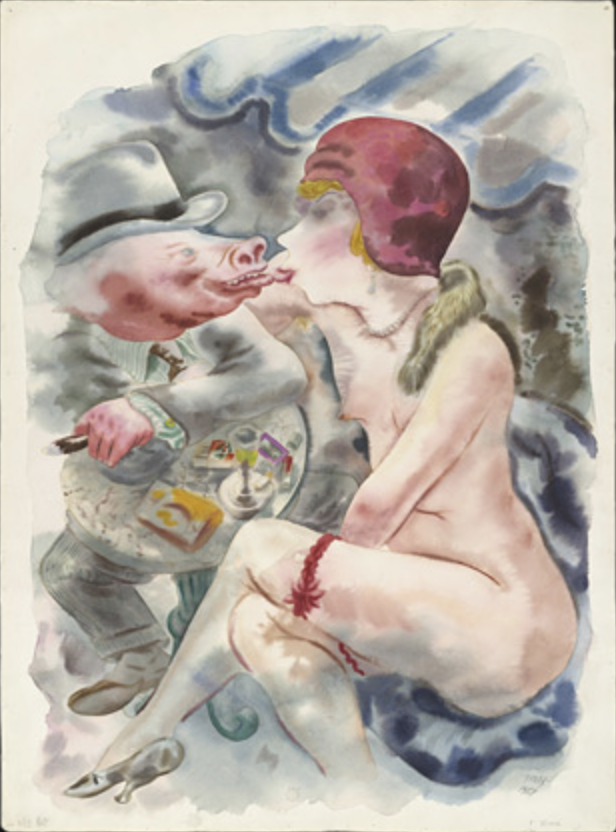
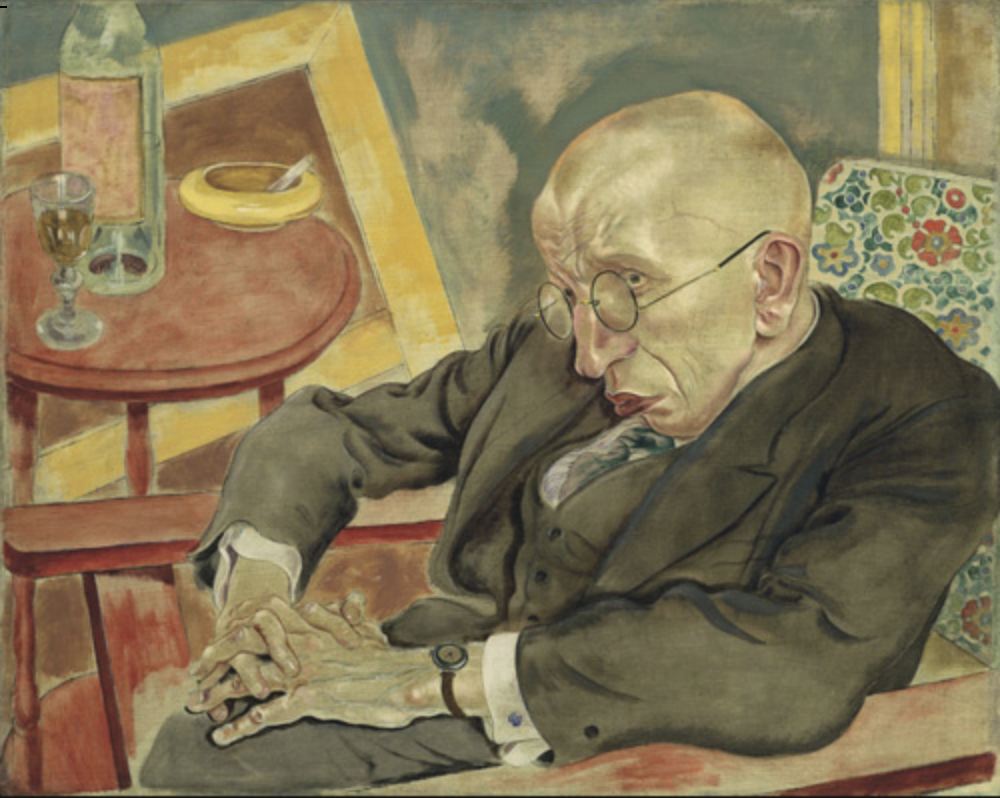
Identifying: Identifying New Objectivity involves recognizing its sharp departure from the expressive tendencies of early 20th-century art. Originating in Germany during the 1920s, New Objectivity, or Neue Sachlichkeit, embraced a more realistic and detached approach. Characterized by precise detail, clear forms, and a focus on everyday subjects, New Objectivity artworks often exhibited a critical and satirical perspective. Artists like Otto Dix and George Grosz depicted the harsh realities of post-World War I Germany, capturing the social and political upheavals of the time. The movement, marked by its rejection of romanticism and expressionism, contributed to the broader spectrum of modern art by offering a sober and objective portrayal of contemporary life.
Regions: Germany
Harlem Renaissance (1920 - 1940’s)
The Harlem Renaissance, a cultural and artistic movement that flourished in the Harlem neighborhood of New York City during the 1920s, represented a celebration and redefinition of African American identity and culture. Influenced by various artistic forms, including literature, music, and visual arts, the Harlem Renaissance showcased a rich diversity of expressions. Figures like Langston Hughes, Zora Neale Hurston, and Aaron Douglas contributed to a vibrant cultural scene that challenged racial stereotypes and played a pivotal role in shaping African American arts and letters.



Identifying: Harlem Renaissance involves recognizing its cultural and artistic flourishing that took place in the Harlem neighborhood of New York City during the 1920s. This movement, predominantly led by African American artists, writers, and intellectuals, sought to celebrate and redefine African American identity and culture. Characterized by a surge in literature, music, visual arts, and intellectual discourse, the Harlem Renaissance showcased a rich diversity of artistic expressions. Influential figures such as Langston Hughes, Zora Neale Hurston, and Aaron Douglas contributed to a vibrant and innovative cultural scene that challenged racial stereotypes and contributed significantly to the broader American cultural landscape. The Harlem Renaissance remains a pivotal moment in the history of African American art and culture.
Regions: Harlem, Manhattan, New York City
Precisionism (1920 - 1950)
Precisionism, also known as Cubist Realism, emerged in the United States during the 1920s and 1930s, focusing on highly detailed and geometric depictions of industrial and urban landscapes. Artists such as Charles Sheeler and Charles Demuth embraced sharp lines, smooth surfaces, and precise forms, reflecting the influence of both Cubism and the American Precisionist movement. Precisionist works often portrayed the clarity and precision of the machine age, capturing the visual allure of skyscrapers, factories, and modern technology.



Identifying: Identifying Precisionism involves recognizing its unique blend of modernist aesthetics and American subject matter during the interwar period. Originating in the 1920s and 1930s, Precisionist artists such as Charles Demuth and Charles Sheeler created works characterized by sharply defined geometric forms, smooth surfaces, and a focus on industrial and urban landscapes. Precisionism sought to depict the clarity and precision of the machine age, often emphasizing the visual allure of skyscrapers, factories, and other technological advancements. The movement, rooted in both modernism and American regionalism, contributed to a distinctive visual language that captured the intersection of industry and art in early 20th-century America.
Regions: The United States.
Surrealism (1924 - 1945)
Surrealism, an artistic and literary movement that emerged in the early 20th century, sought to explore the irrational and subconscious realms of the mind. Led by André Breton, Surrealist artists such as Salvador Dalí, René Magritte, and Max Ernst created dreamlike and fantastical works, often employing techniques like automatic writing and collage. Surrealism aimed to challenge conventional reality, inviting viewers to interpret the symbolic and psychological elements within the artworks. The movement had a profound impact on both visual arts and literature, influencing subsequent generations of artists.


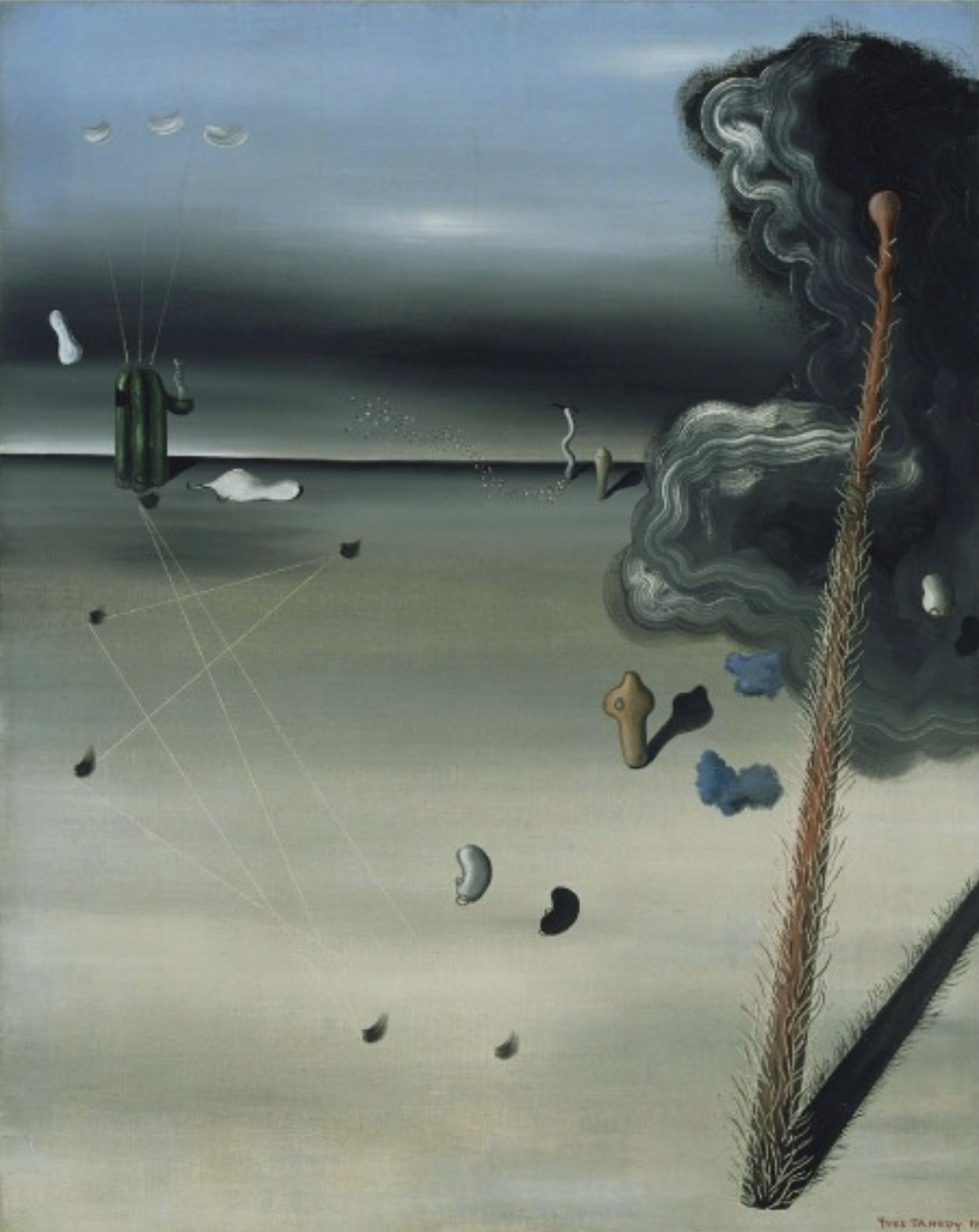
Identifying: Identifying Surrealism involves recognizing its exploration of the subconscious and the irrational, emerging in the 1920s. Spearheaded by figures like André Breton and Salvador Dalí, Surrealism sought to tap into the dreamlike and fantastical realms of the mind. Characterized by dream imagery, unexpected juxtapositions, and an emphasis on automatism, Surrealist artworks often challenged conventional perceptions and delved into the mysterious and symbolic.
Regions: Europe
Abstract Expressionism (1945 - 1960)
Abstract Expressionism, a dominant art movement in the mid-20th century, originated in the United States and is characterized by non-representational and spontaneous expressions. Artists like Jackson Pollock, Willem de Kooning, and Mark Rothko embraced a gestural and emotional approach to painting, often using large canvases to convey a sense of scale and intensity. Abstract Expressionism played a pivotal role in the development of modern art, contributing to the shift from representational to abstract modes of artistic expression and emphasizing the process and act of painting itself.
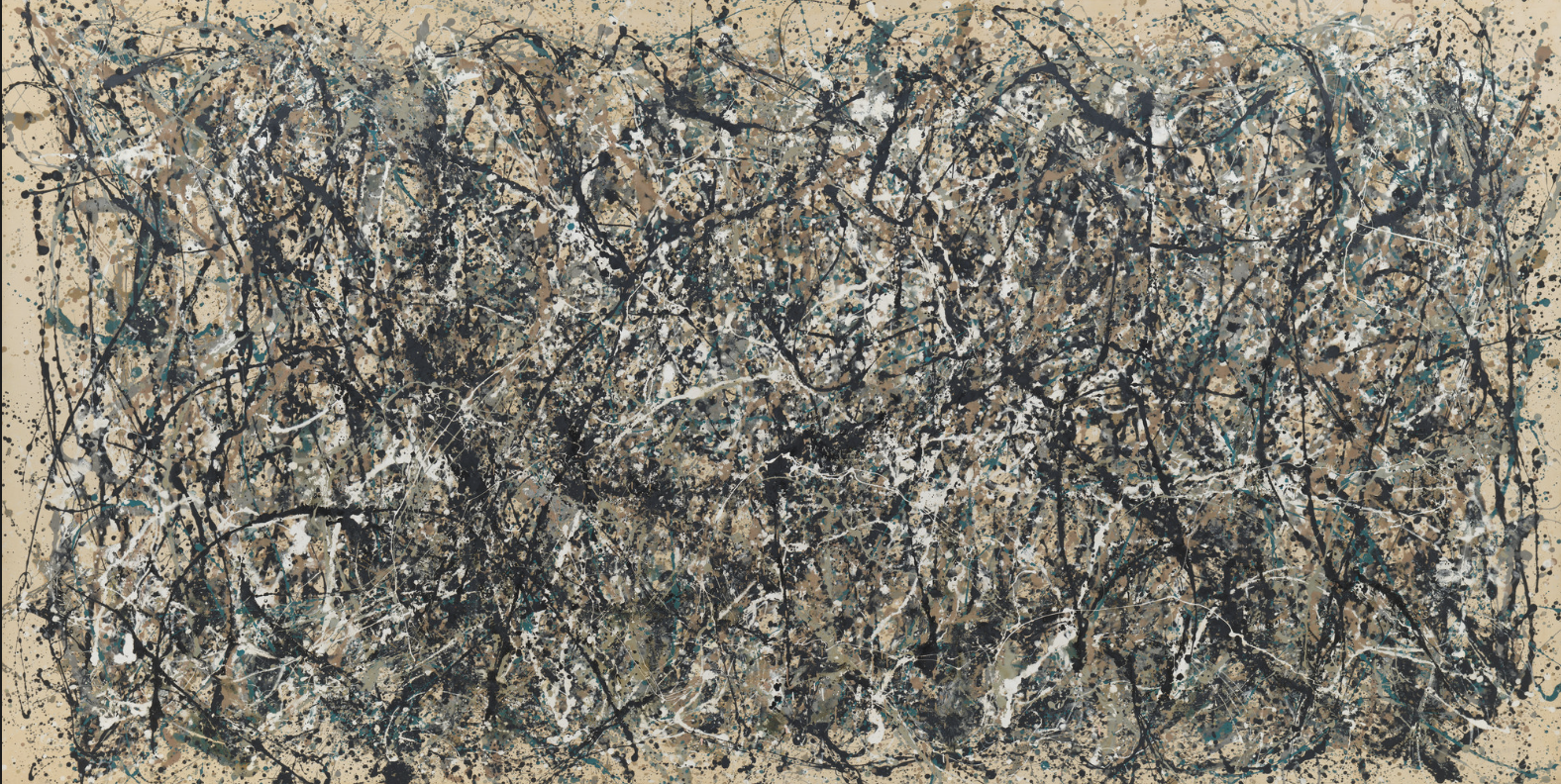


Identifying: Identifying Abstract Expressionism involves recognizing its emphasis on spontaneous, gestural expressions and abstraction, flourishing in the post-World War II era. Artists like Jackson Pollock and Willem de Kooning were central to this movement, which encompassed various styles within abstraction. Characterized by large-scale canvases, expressive brushwork, and an emphasis on the act of painting itself, Abstract Expressionism aimed to convey emotion, energy, and the artist's inner world. The movement played a significant role in the evolution of modern art, influencing subsequent developments in the art world.
Regions: United States, New York City.
Pop Art (1956 - 1969)
Pop Art, a movement that emerged in the 1950s and reached its peak in the 1960s, challenged the traditional boundaries between high and low culture. Artists like Andy Warhol, Roy Lichtenstein, and Claes Oldenburg drew inspiration from popular culture, mass media, and consumer products. Pop Art featured bold colors, iconic imagery, and a sense of irony, often critiquing the commodification of art and the saturation of consumer culture. The movement reflected the influence of advertising and mass production, making art more accessible to a broader audience.


Identifying: Pop Art involves recognizing its embrace of popular culture and consumerism, emerging in the mid-20th century. Artists like Andy Warhol and Roy Lichtenstein blurred the lines between high and low culture, incorporating mass media imagery and everyday objects into their works. Characterized by bold colors, irony, and a focus on the mundane, Pop Art sought to challenge traditional notions of art and engage with contemporary society.
Regions: Britain and America
Minimalism (1960 - 1999)
Minimalism, a prominent art movement that emerged in the 1960s, sought to strip art down to its essential elements, eliminating unnecessary ornamentation and emphasizing simplicity. Artists like Donald Judd, Agnes Martin, and Frank Stella embraced geometric forms, clean lines, and industrial materials. Minimalist artworks often invited contemplation of space, form, and the viewer's perception, creating a direct and uncluttered aesthetic. The movement had a profound impact on various artistic disciplines, influencing sculpture, painting, and architecture.


Identifying: Minimalism involves recognizing its emphasis on simplicity, geometric forms, and a reduction of visual elements to the essentials. Emerging in the 1960s, Minimalist artists like Donald Judd and Agnes Martin sought to eliminate excess and focus on the inherent qualities of materials. Characterized by clean lines, monochromatic palettes, and a rejection of ornamentation, Minimalism aimed to create a direct and immediate experience for the viewer, challenging the complexity and expressiveness of preceding art movements.
Regions: Global (Originated in United States, New York City.)
Op Art (1960’s - 1970)
Op Art, short for Optical Art, emerged in the 1960s as a movement that sought to create visual illusions and perceptual effects through precise patterns and geometric forms. Artists like Bridget Riley, Victor Vasarely, and Yaacov Agam utilized contrasting colors, repetition, and optical tricks to produce dynamic and often mesmerizing visual experiences. Op Art aimed to engage the viewer actively, challenging traditional notions of static visual art and exploring the dynamic potential of perception.



Identifying: Op Art involves recognizing its use of optical illusions and geometric patterns to create visual effects that deceive the eye. Emerging in the 1960s, artists like Bridget Riley and Victor Vasarely employed precise patterns, contrasts, and vibrant colors to produce dynamic and often mesmerizing visual experiences. Characterized by the emphasis on perception and movement, Op Art aimed to engage the viewer actively, challenging traditional notions of static visual art.
Regions: Global
Conceptual Art (mid 1960s - mid 1970s)
Conceptual Art, arising in the late 1960s and early 1970s, prioritized the idea or concept behind the artwork over its material form. Artists like Sol LeWitt, Yoko Ono, and Joseph Kosuth explored a diverse range of mediums, often incorporating language, text, and documentation. Conceptual Art challenged traditional notions of aesthetics and the commodification of art objects, emphasizing intellectual engagement and dematerialization. The movement expanded the boundaries of artistic expression, inviting viewers to consider the philosophical and conceptual aspects of the creative process


Identifying: Identifying Conceptual Art involves recognizing its emphasis on ideas and concepts over traditional artistic forms. Originating in the 1960s, artists like Sol LeWitt and Yoko Ono shifted the focus from the art object to the underlying ideas or concepts. Characterized by a diverse range of mediums and often involving language, text, or documentation, Conceptual Art challenges conventional notions of aesthetics and materiality, inviting viewers to engage with intellectual and philosophical aspects of the artistic process.
Regions: Global
Contemporary Art (1970 - Present)
Contemporary Art, spanning from the 1970s to the present, reflects the diversity and fluidity of artistic practices in a globalized world.
Identifying: Characterized by a wide range of styles, mediums, and concepts, Contemporary Art defies strict categorization. Artists working in this period, such as Ai Weiwei and Kara Walker, engage with global issues, technology, identity, and various forms of expression. The term "contemporary" reflects an ongoing dialogue with the current cultural, social, and political contexts, fostering a continual exploration of new ideas and perspectives in the art world.
Regions: Global
That brings us to the end! It is noteworthy to underscore that the presented enumeration is not exhaustive, nor does it attain a level of remarkable specificity. In the event that there exists a desire for an expositional treatment of a particular ideological paradigm, whether aforementioned or inadvertently omitted, I invite you to comment down below.

